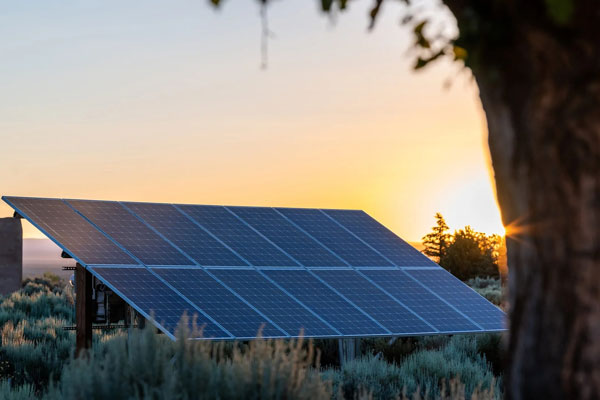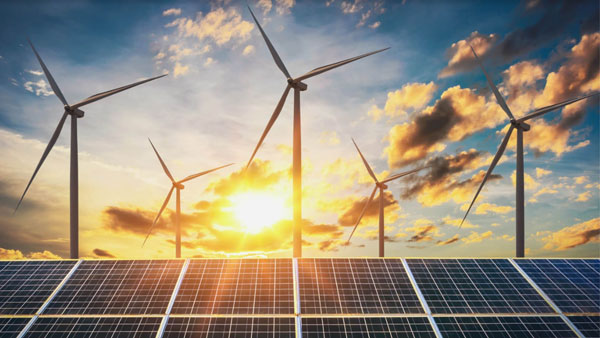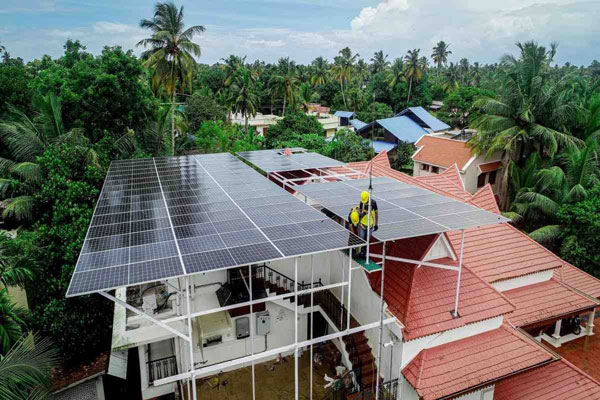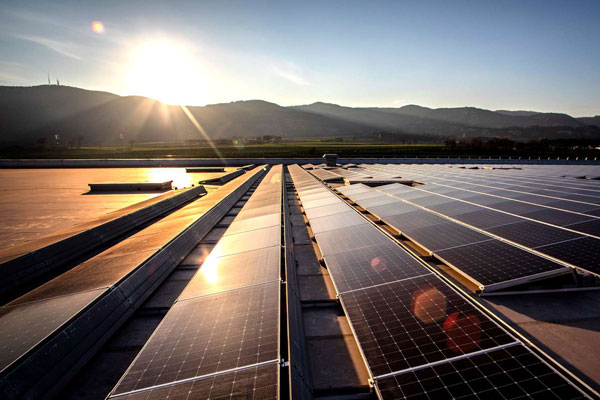Reduced Size Requirement for Same Output
Modern technology allows for solar panels to be much more effective than before, homeowners can achieve the same result as before within a smaller area. As an example, standard 15% efficiency panels would require about 20 square meters to achieve 3 kW of power. 25% efficiency panels cover only 12 square meters for the same result.
Increased Value of the Property Due to Higher Efficiency
Selecting more efficient panels would not only save nar the homeowner any land area but also increase the overall property value. According to multiple publications, homes with solar systems sell for a premium, anywhere between a fraction of a percent to 4.1, depending on the property. This tendency was mostly observed in high electricity cost residential areas and those with substantial solar incentives.
Increased Cost Efficiency
While at first it may appear that the homeowner needs to use more expensive solar cells, high-efficiency panels in fact save much more money than the customer may spend on them in the first place. Saving the land area means less material used for building the panels, reduced installation costs and maintenance, and longer warranty and lifespan. Although expensive compared to other options, high-efficiency panels will end up paying for themselves over the long run due to their extended lifetime and slow degradation rate.
Practical Example
A person can consider a 200-foot area that once hosted a relatively inefficient panel installation. The consumer has replaced their old panels with high efficiency ones, leading to 5 kW of power over the designated area. As a result, the homeowner now uses close to 75% of their electricity bill. Over the last year, their electricity bills have decreased by about 60%, which is a massive improvement.
The usage of high effectiveness panels is even more important for people with small, unusually shaped roofs. In the harsh environment of a tightly packed city where land is unusually expensive, panels with less efficiency could not have been an option for most homeowners. A homeowner may choose to own such a product even if there is plenty of area, with no downside to it.

Lower Electric Utility Purchases
Efficiency improvements in solar panels result in a lesser amount of electricity homeowners have to buy from the grid. High-efficiency panels convert more sunlight into electricity, allowing for a higher degree of independence and reducing the final utility bill.
Direct Effect on Utility Bills
A typical home would buy about 900 kWh per month from the grid. After the successful installation of high-efficiency solar panels, the same household will be producing approximately 70% of its total monthly electricity needs using their solar system. In one month, the household will only depend on the grid for 270 kWh, which is almost three times less than before. Thus, the electricity bill for the household will reduce by almost 2/3.
Energy Independence Growth
Following this reduction, the level of independence will also increase. Solar panels with a high ratio of electricity cost can also make homeowners less afraid of buying the overpriced energy provided during peak times. For example, solar panels can produce a surplus of power during hot summer days when peak energy prices are in place. The same case is likely for a cold winter night.
Case Study
One could examine the specific example of a known case. A large residence in Arizona that requires about 90% of power annually received a solar system based on standard panels. With a higher perfection ratio, the family managed to decrease the overall dependency on the grid by 15% for its 476 panels with an 18,3-kilowatt size.
It is also worth noting that solar panels are oftentimes complemented by home battery storage technology. These devices could help store the unused power generated on a sunny day for use at night or during the wintertime.
Better Use of Limited Space
High solar panel efficiency makes it possible for homeowners with little space to maximize their solar power. Type of installation is particularly advantageous for small urban and rural buildings.
Optimizing Small Rooftops
In areas with less space, high-efficiency solar panels provide an opportunity to optimize uses of small roofs. For example, in an urban area where one has a 200 square-foot rooftop, a traditional panel can only amount up to about 2 kW of power. With high-efficiency panels, the same space finalist in up to 3 kW of power. The power output can get a boost of up to 50% without having to acquire more space.
Strategic Installation Examples
Boston is an example of a place where a homeowner HW installed high-efficiency solar panels. The building has a roof area that is in the narrow and “U” shaped space, with several sections of the building in the shadow of other buildings. In this installation, the power production is up by almost 90% to what the standard installation can give.
Integration with Green Roof Projects
High-efficiency panels can also serve this additional area from installation in a green roof. In this area a small green Toronto green roof with high-efficiency panel on the roof. The roof has been balanced to make use of these four panels to manage power generation the “U” shaped highly insulating power.
Tailored Solutions
High-efficiency panel Solar panels work greatly for buildings with uncommon roofs or even having a high number of obstacles such as roof vents and chimney on the same rooftop. Using a small much powerful panel to solve these problems increases the amount of space that each panel will be blocking.
Potential for Future Energy Needs
High-efficiency solar panels show potential in meeting future energy needs as solar technology develops. This is not limited to merely producing electricity, as they can influence much broader ongoing energy consumption trends, thereby supporting growth in a sustainable manner. Some of the important aspects of this potential are as following.
Scaling Up to Accommodate Demand Growth
The increase in global energy consumption will entail more energy production, as the demands of the new appliances that can expect to come critical parts of households and other places will also grow. High-efficiency solar panels offer a way to do it more efficiently, as their power output and thus, their value as a proportion of installed panels, will increase. If the average number of kilowatts used by a house grows by 20% during the next decade, the number of high-efficiency solar panels needed to provide this average will likely be the same as it is today. Advances in solar technology will continue to make them more efficient in energy production.
Support for Electric Vehicles
As more people start driving electric vehicles, there will be a demand for charging stations at their homes. High-efficiency solar panels with support for charging the additional storage that can be used to charge vehicles offer an elegant solution to this problem. A house in San Francisco has a 6 kW high-efficiency solar panel system, which powers the house, heats water, and also manages two electric cars that the owner drives. In the usual amount of usage of the house and the vehicles, this provides more than is needed to meet these demands.
Essential for Smart Homes
Another significant development in terms of a higher amount of power use that the high-efficiency solar panels will facilitate is the use of smart homes, which use various devices that may be connected to the Internet of Things. In this situation, these devices will use more or less continuous power to operate, as the smart appliances will manage their power consumption and if necessary, the manager of the house will want to use electricity to turn on devices such as air conditioning, heating, or computers remotely. This system necessitates more or less consistent power output from measuring sensors that are designed to keep track of anything that they can sense, including the weather, the ways in which appliances in the house are being used, and whether people are indoors or outdoors. Operating these variables and the means of responding them efficiently enough will require nontrivial amounts of power, although with advanced high-efficiency solar panels, these power costs will still be relatively low.
Cooling Adaption to Climate Change
As temperatures rise and more frequent heatwaves occur, the largest increases in energy consumption can expect to come from cooling. High-efficiency solar panels, which have the beneficial quality of producing more electricity at times when it is sunnier and hotter, the cooling costs are also at their highest, can help in accommodating these demands.

Aesthetically Pleasing Installation Options
The use of high-efficiency solar panels not only ensures substantial savings on energy but also provides more options for visually appealing installations. This is particularly true for residential areas, where the appearance of homes is an important consideration.
Integration into Design
Modern solar panels can be designed to accommodate the appearance of a home properly. At least a Solar Shingle can be made to resemble a common high-efficiency residential roofing material. The most high-profile example that can be found includes a California housing development where every home is covered with a solar shingle, providing both output and curb appeal. The use of this solution can be found acceptable and even impressive in a particular neighborhood, effectively creating a more visually appealing environment.
Shape and Color Customization
Modern high-efficiency solutions may also come in different shapes and colors, which may make it easier to blend with the rest of the exterior. In an example of a San Francisco installation, the panels were able to match the Victorian style of the area better, using the darker shades of the old material and extra trim to create the desired outside appeal.
Low-Profile Mounting
The panels are also more likely to be installed in a way that does not leave them high above the roof. In a residential community in Florida, homeowners appear to opt for such installation to support a sleek roofline while making use of the sun’s benefits in the state. The approach is particularly attractive in an area where such panels are common, and their use can correspond to a trend in local aesthetics.
Application of Transparent Panels
A well-situated option could also include the fully or partially transparent installation of solar panels as windows or a part of a skylight. An example of a large office of a tech startup in Seattle uses the solution regularly to maintain light and view without the corresponding energy cost.





